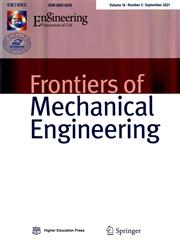用于海滩垃圾自动预测和管理系统的机器学习方法:以孟买为例
IF 4
2区 工程技术
Q1 ENGINEERING, MECHANICAL
引用次数: 0
摘要
亚洲的海岸线正被垃圾淹没。该地区现在是世界上许多污染最严重的海滩的所在地。人口众多的印度城市正在以不可持续的方式发展经济。孟买被列为世界上污染最严重的海滩之一,现在需要采取必要措施,通过系统的数据分析,从废物产生模式中获得有用的信息,进行有效的废物管理。研究的主要目标是基于5年数据的模式识别和海滩废物量子预测,每天收集废物的频率。训练数据集的大小为1661天,验证数据集的大小为335天。人口趋势、节日、特殊日子、周末产生的垃圾以及季节变化的影响构成了分析的基础。该研究使用机器学习算法,确定并调查了达达尔-马希姆海滩案例研究的数据模式。数据频率和权重与事件、节日、周末和季节的发生相关。探索性数据分析(EDA)用于数据预处理和整理,然后基于随机森林算法的模型用于预测达达尔-马希姆海滩产生的废物。数据预测的主要挑战是数据可用性有限,节日和假日日期变化不定,以及缺乏废物分类信息。尽管存在上述挑战,但观测结果表明,该模型的平均预测精度约为60%。基于该模型开发的图形用户界面(GUI)提供了一个用户友好的应用程序,以合理的精度预测海滩废物的每日总产生量。根据模型的结果和适用性,提出了一种有效的海滩废物管理方案。这些建议将作为城市地方机构(ulb)自动收集、运输和处置海滩废物的指导方针。本文章由计算机程序翻译,如有差异,请以英文原文为准。
Machine learning approach for automated beach waste prediction and management system: A case study of Mumbai
Asia’s coastlines are choking in waste. The region is now home to many of the world’s most polluted beaches. The populous Indian Cities are growing economically but in an unsustainable manner. With Mumbai counted among topmost polluted beaches in the world, it is the need of the hour to take necessary steps for effective waste management by systematic data analysis for deriving useful information from waste generation patterns. The major objective of the study is pattern recognition and beach waste quantum prediction based on 5 years data, with a frequency of daily waste collection. The size of the training data set is 1,661 days and the validation data set is 335 days. The influence of population trend, waste generation during festivals, special days, weekends, and seasonal variations form the basis for the analysis. Using machine learning algorithms, the study identifies and investigates data patterns for the case study of Dadar-Mahim beach. Data frequency and weights are correlated with occurrence of events, festivals, weekends, and seasons. Exploratory Data Analysis (EDA) is employed for data preprocessing and wrangling, followed by a Random Forest algorithm-based model for the prediction of waste generated at Dadar-Mahim beach. The major challenges in data prediction are limited data availability and variation in the dates of festivals and holidays as well as lack of waste segregation information. Despite the above-mentioned challenges, the observations indicate the model’s average accuracy for making predictions of around 60%. The Graphic User Interface (GUI) developed based on the model provides a user-friendly application for predicting the total daily generation of beach waste with reasonable precision. On the basis of the model’s outcome and applicability, a schematic approach for efficient beach waste management is proposed. The recommendations would serve as guidelines for Urban Local Bodies (ULBs) to automate the collection, transport, and disposal of beach waste.
求助全文
通过发布文献求助,成功后即可免费获取论文全文。
去求助
来源期刊

Frontiers of Mechanical Engineering
Engineering-Mechanical Engineering
CiteScore
7.20
自引率
6.70%
发文量
731
期刊介绍:
Frontiers of Mechanical Engineering is an international peer-reviewed academic journal sponsored by the Ministry of Education of China. The journal seeks to provide a forum for a broad blend of high-quality academic papers in order to promote rapid communication and exchange between researchers, scientists, and engineers in the field of mechanical engineering. The journal publishes original research articles, review articles and feature articles.
 求助内容:
求助内容: 应助结果提醒方式:
应助结果提醒方式:


